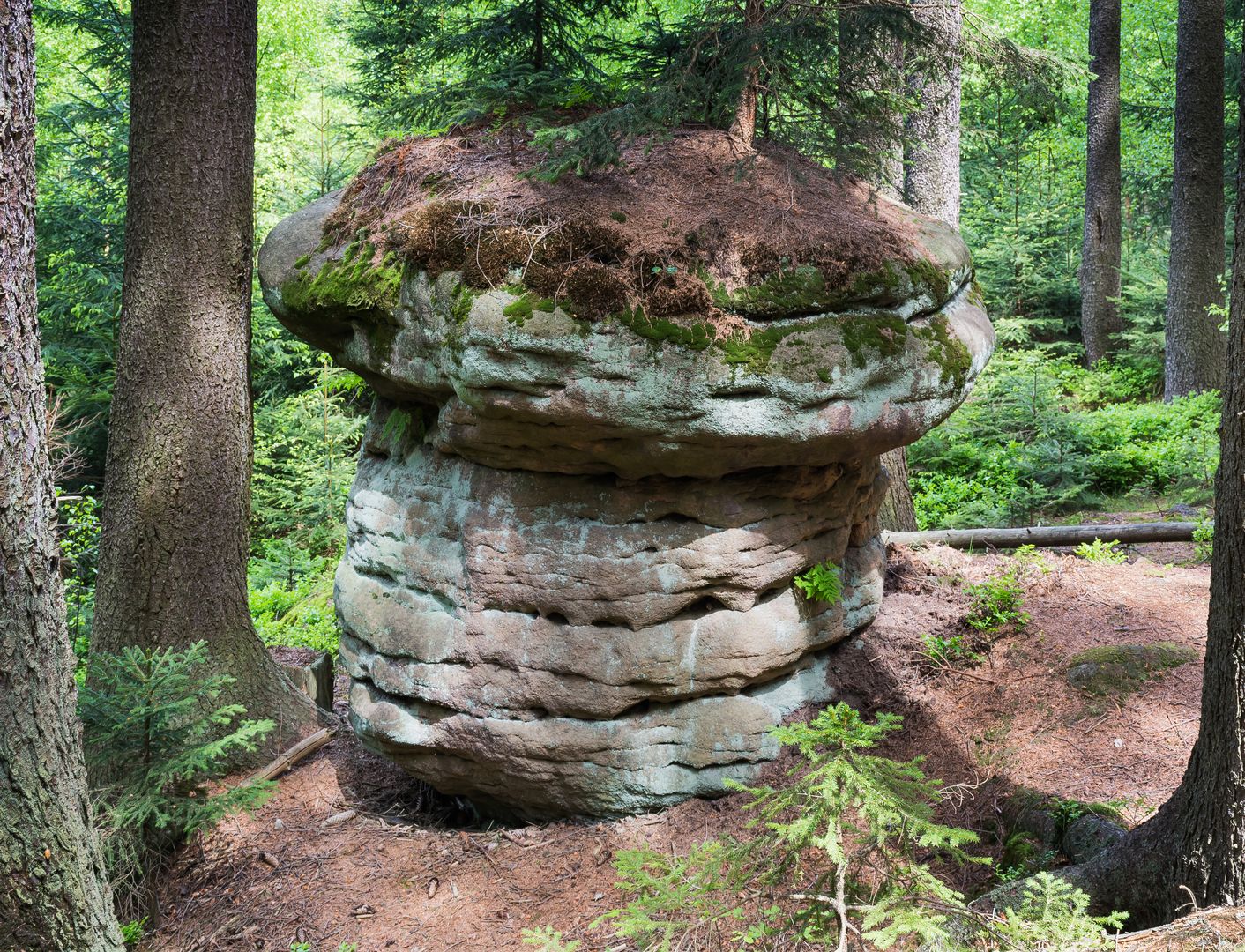Rock Mushrooms
6.68

Overview
The Rock Mushrooms (Skalne Grzyby) are a unique group of rock formations located in the Stołowe Mountains in the Central Sudetes, in southwestern Poland. They were formed as a result of the erosion of sandstone layers and consist mainly of sandstones, as well as impermeable marls and shales. Before the orogeny, this area was the bottom of a sea. The rock formations take on diverse shapes, resembling mushrooms, clubs, and towers, with some named "Borowik" (Porcini), "Skalne Wrota" (Rock Gates), or "Pingwinki" (Little Penguins). They stand at an altitude of approximately 680–700 meters above sea level and stretch over a length of about 2 kilometers, often arranged in tiers.
The trails leading to the Rock Mushrooms include the yellow trail from Batorów, the blue trail from Wambierzyce, and the red trail near the Parking Szosa Stu Zakrętów (Hundred Turns Road Parking). The blue trail is less frequented, offering tranquility and numerous views of the surrounding Ścinawskie Hills. In the 1950s, a severe windstorm that knocked down part of the forest contributed to exposing these rock formations, further enhancing their tourist appeal.
The hiking trails in the area, such as Polanica-Zdrój – Radków and Karłów – Wambierzyce, make it a magnet for tourists seeking both adventure and a connection with nature. The Rock Mushrooms, also known as Goldbacher Felsen, are not only an attraction for climbing enthusiasts but also for anyone wishing to admire the beauty of nature and learn about the geological history of the region. This extraordinary place combines architectural aspects in the form of nature sculpted by erosion, as well as cultural significance, as it attracts many tourists and stands as an important point on Poland's tourist map.
Location
Tickets
Powered by GetYourGuide
2025 Wizytor | All Rights Reserved